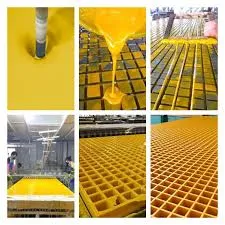
-
 Afrikaans
Afrikaans -
 Albanian
Albanian -
 Amharic
Amharic -
 Arabic
Arabic -
 Armenian
Armenian -
 Azerbaijani
Azerbaijani -
 Basque
Basque -
 Belarusian
Belarusian -
 Bengali
Bengali -
 Bosnian
Bosnian -
 Bulgarian
Bulgarian -
 Catalan
Catalan -
 Cebuano
Cebuano -
 China
China -
 China (Taiwan)
China (Taiwan) -
 Corsican
Corsican -
 Croatian
Croatian -
 Czech
Czech -
 Danish
Danish -
 Dutch
Dutch -
 English
English -
 Esperanto
Esperanto -
 Estonian
Estonian -
 Finnish
Finnish -
 French
French -
 Frisian
Frisian -
 Galician
Galician -
 Georgian
Georgian -
 German
German -
 Greek
Greek -
 Gujarati
Gujarati -
 Haitian Creole
Haitian Creole -
 hausa
hausa -
 hawaiian
hawaiian -
 Hebrew
Hebrew -
 Hindi
Hindi -
 Miao
Miao -
 Hungarian
Hungarian -
 Icelandic
Icelandic -
 igbo
igbo -
 Indonesian
Indonesian -
 irish
irish -
 Italian
Italian -
 Japanese
Japanese -
 Javanese
Javanese -
 Kannada
Kannada -
 kazakh
kazakh -
 Khmer
Khmer -
 Rwandese
Rwandese -
 Korean
Korean -
 Kurdish
Kurdish -
 Kyrgyz
Kyrgyz -
 Lao
Lao -
 Latin
Latin -
 Latvian
Latvian -
 Lithuanian
Lithuanian -
 Luxembourgish
Luxembourgish -
 Macedonian
Macedonian -
 Malgashi
Malgashi -
 Malay
Malay -
 Malayalam
Malayalam -
 Maltese
Maltese -
 Maori
Maori -
 Marathi
Marathi -
 Mongolian
Mongolian -
 Myanmar
Myanmar -
 Nepali
Nepali -
 Norwegian
Norwegian -
 Norwegian
Norwegian -
 Occitan
Occitan -
 Pashto
Pashto -
 Persian
Persian -
 Polish
Polish -
 Portuguese
Portuguese -
 Punjabi
Punjabi -
 Romanian
Romanian -
 Russian
Russian -
 Samoan
Samoan -
 Scottish Gaelic
Scottish Gaelic -
 Serbian
Serbian -
 Sesotho
Sesotho -
 Shona
Shona -
 Sindhi
Sindhi -
 Sinhala
Sinhala -
 Slovak
Slovak -
 Slovenian
Slovenian -
 Somali
Somali -
 Spanish
Spanish -
 Sundanese
Sundanese -
 Swahili
Swahili -
 Swedish
Swedish -
 Tagalog
Tagalog -
 Tajik
Tajik -
 Tamil
Tamil -
 Tatar
Tatar -
 Telugu
Telugu -
 Thai
Thai -
 Turkish
Turkish -
 Turkmen
Turkmen -
 Ukrainian
Ukrainian -
 Urdu
Urdu -
 Uighur
Uighur -
 Uzbek
Uzbek -
 Vietnamese
Vietnamese -
 Welsh
Welsh -
 Bantu
Bantu -
 Yiddish
Yiddish -
 Yoruba
Yoruba -
 Zulu
Zulu
fiberglass dual lamination product
The Advantages of Fiberglass Dual Lamination Products
In modern manufacturing and construction, materials play a pivotal role in ensuring durability, strength, and longevity. Among these materials, fiberglass dual lamination has emerged as a leading option in various applications, thanks to its versatility and exceptional properties. This article explores the benefits and applications of fiberglass dual lamination products, shedding light on why they have become a preferred choice in diverse industries.
Fiberglass dual lamination refers to a manufacturing process that combines fiberglass layers with a resin matrix, creating a robust and durable composite material. This dual lamination technique enhances the structural integrity of the product by providing increased strength and resistance to environmental factors. The process involves layering fiberglass cloths, which are then saturated with resin and cured to form a solid, cohesive structure. The result is a lightweight yet exceptionally strong material that can withstand considerable mechanical stress.
One of the primary advantages of fiberglass dual lamination products is their resistance to corrosion. Unlike traditional metals, which can corrode when exposed to moisture and chemicals, fiberglass composites offer superior resistance to corrosion, making them ideal for use in harsh environments. This property is particularly beneficial in industries such as marine, chemical processing, and wastewater treatment, where materials are frequently exposed to aggressive substances.
In addition to their corrosion resistance, fiberglass dual lamination products exhibit impressive thermal and electrical insulation properties. This makes them suitable for applications in electrical enclosures, insulators, and components that require thermal stability under varying conditions. The ability to maintain performance and integrity across a wide range of temperatures further enhances the versatility of these composites.
fiberglass dual lamination product

Moreover, the aesthetic appeal of fiberglass dual lamination products cannot be overlooked. They can be manufactured in a variety of colors and finishes, allowing for customization that meets both functional and aesthetic requirements. This flexibility makes them popular in the automotive, consumer goods, and architectural industries, where visual design is as crucial as performance.
Another significant benefit of fiberglass dual lamination is its lightweight nature. This characteristic facilitates easier handling, transportation, and installation compared to traditional building materials like steel or concrete. The reduction in weight not only lowers shipping costs but also minimizes the structural load on buildings, thereby enhancing overall engineering efficiency.
The sustainability aspect of fiberglass products is also worth noting. Many manufacturers are now employing eco-friendly resins and additives, making fiberglass dual lamination an environmentally conscious choice. With growing awareness about sustainable practices, industries are increasingly turning towards materials that not only perform well but also minimize environmental impact.
In conclusion, fiberglass dual lamination products offer a multitude of advantages that make them a superior choice across various applications and industries. Their strength, corrosion resistance, thermal stability, and aesthetic customization combine to create a material that meets modern engineering demands. As manufacturers continue to innovate and improve the production techniques of fiberglass composites, we can expect to see even broader applications and advancements in this area, reinforcing fiberglass dual lamination’s position as a vital material in contemporary manufacturing and construction.









